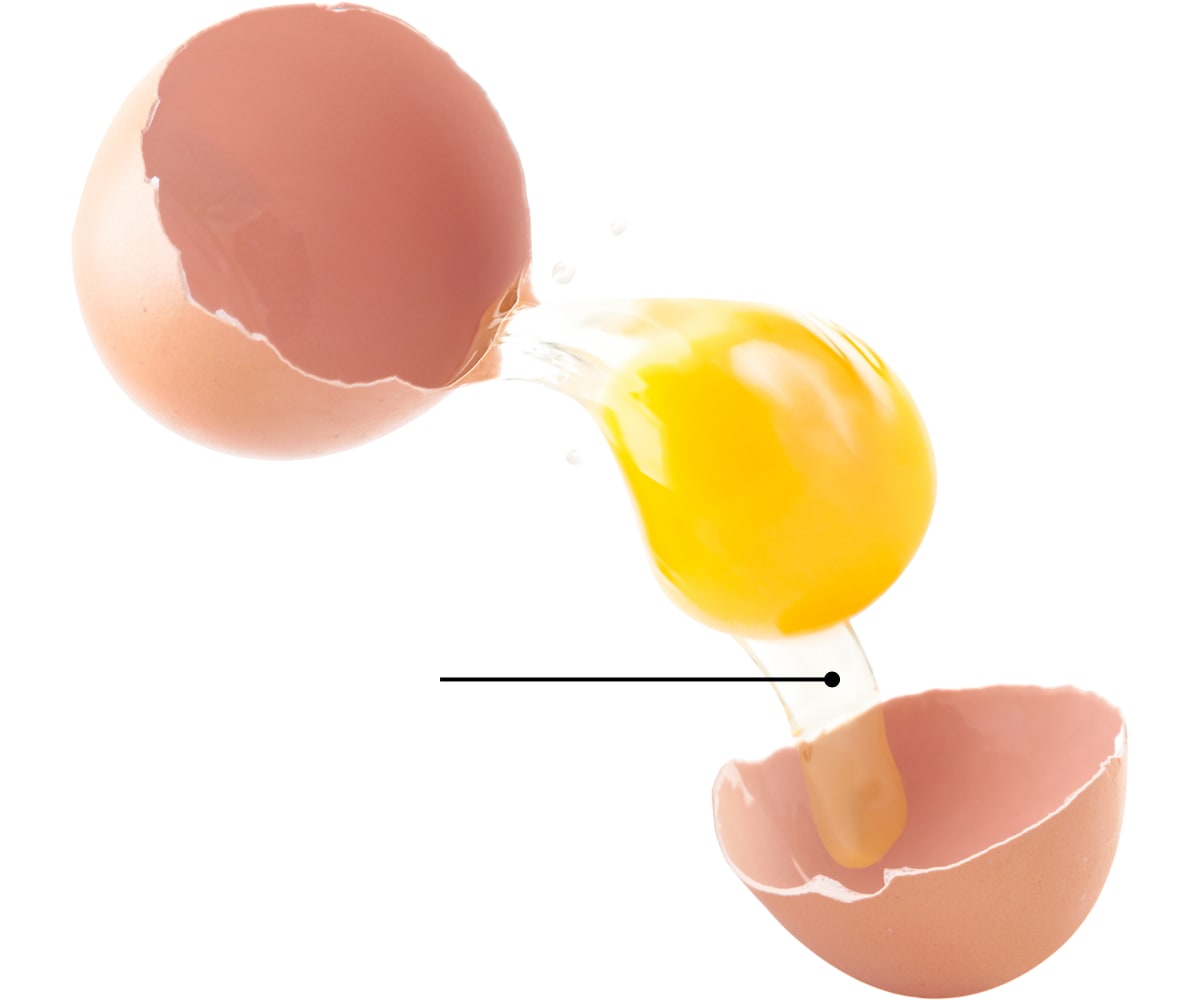The table eggs we all know and love were evolutionarily designed to sustain life—and I don’t mean mine or yours! The unique nutritional qualities offered by this breakfast and baking staple developed from a need to grow a healthy chick. Eggs are cushioned for growth, provide an environment that's safe from outside invaders and hold enough nutrients to sustain baby chicks until they hatch—and even a little while after.
Let’s go over the composition of an egg, starting from the outside and working our way in.
1. Cuticle
Eggs are laid with a very thin outermost coating called the cuticle or bloom. This thin outer membrane reduces the permeability of the egg shell to protect its contents from dirt, dust and other foreign material.
In modern egg processing, washing the eggs removes this membrane. This is why eggs from the grocery store need to be refrigerated, and fresh eggs from your own birds can be left on the counter.
2. Shell
The shell of the egg is made of calcium carbonate and has thousands of tiny pores, making it a semipermeable membrane—specifically to moisture and gases.

This allows carbon dioxide produced by the unhatched chick to escape and be replaced with oxygen from outside of the shell.
3. Outer and Inner Membranes
Between the shell and the albumen, or egg white, there are two other membranes: the outer shell membrane and inner shell membrane. These shell membranes function to protect the contents of the egg from bacterial invasion and prevent moisture from leaving the egg too quickly.
Shortly after being laid, the two membranes separate at one end of the egg, forming a small pocket of air called the air cell. This happens when the egg begins to cool from body temperature to ambient temperature. The contents of the egg contract, and the two membranes separate. This separation of membranes can be used to indicate freshness. The longer an egg sits, the more moisture it will lose and the more it will contract, making the air cell grow larger as the egg ages.
4. Albumen

Next, we get to the albumen—or what most people refer to as the egg white. There are two portions of the albumen: the outer thin albumen, which is a fluid layer, and the inner thick albumen, which is the portion closest to the yolk.
Both portions of the albumen are the fluid media for chick development and help absorb any movement the embryo may make during development. This part of the egg is extremely high in protein!
5. Yolk
The star of the show is the yolk, of course, which is bright yellow and neatly held in the center of the egg. The egg yolk serves as nutrients for the growing chick, which is why it is extremely nutrient dense in both proteins and fats.
6. Vitelline Membrane
The yolk is surrounded by a clear casing that is referred to as the vitelline membrane. This membrane helps keep the yolk's perfectly round shape as well as helps prevent egg yolk mottling, which is uneven or patchy coloration of the yolk surface.
7. Chalazae

If you look closely at a fresh egg, you may notice what looks like small white strings on either end of the yolk. These are called chalazae. They are made of twisted strains of mucin proteins, and their role is to hold the yolk in place during egg formation.
8. Blastodisc
On the surface of the yolk, you can find a small white dot. This is referred to as the germinal disk, or blastodisc, and is the single female cell needed to initiate embryonic development.
If your eggs are not fertile, the blastodisc will remain intact and appear as a solid white dot. However, if your eggs are fertile, the center of the dot will appear yellow. This indicates that the germinal disc has been fertilized—making it now a blastoderm—and has the potential to develop into a chick.
It is important to remember that eggs will only develop embryos if kept at a specific temperature. Without incubation, the blastoderm will never develop further. So don’t worry about eating a fertilized egg! As long as it hasn't intentionally been incubated, you will not be eating an actual baby chicken.

Eggs are a delicious and nutritious part of our diets, but they’re also efficient vessels specifically formed for growing safe and healthy baby chicks. They’re good for us because they’re designed to be good for sustaining a life! Raising your own chickens is amazing for many reasons, and we hope that learning about the composition of an egg will help you appreciate it even more.
Contact Us
In addition to being chicken enthusiasts here at Southland Organics, we make all-natural health supplements for backyard flocks. Our products help your birds stay in peak condition and produce eggs with nice, firm shells. If you have any questions about our products or the parts of a chicken egg, reach out to alyssa@southlandorganics.com or give us a call at 800-608-3755.






